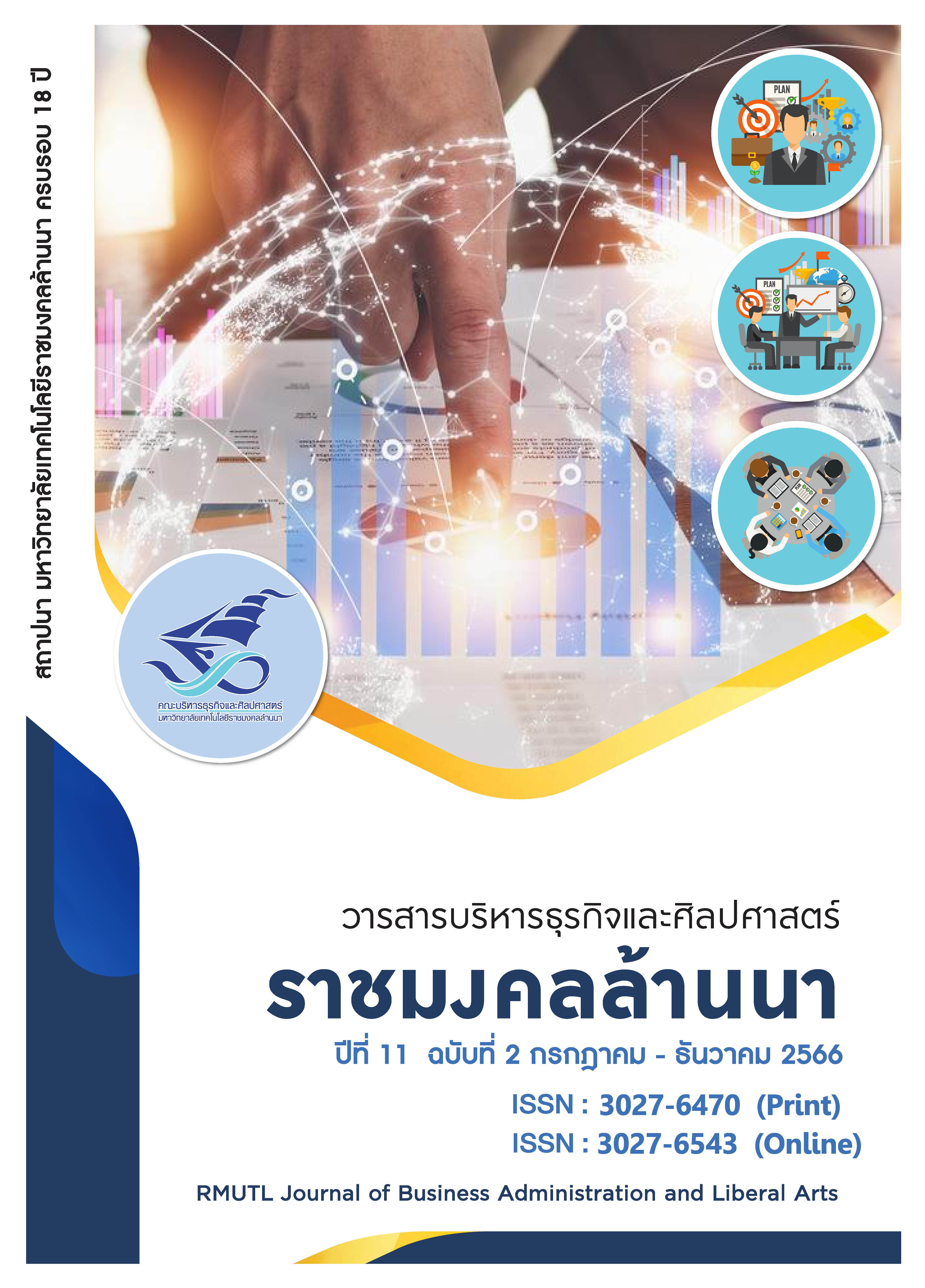Competency Developing of Community Innovators in Promoting The Elderly’s Potential to Raising Income for Support the Aging Society
Main Article Content
Abstract
The purpose of this research was to develop the competencies of community innovators in enhancing the potential management of the elderly occupational groups in the community to raising income for support the aging society. This research is a mixed method research, starting with qualitative research to build the capacity of innovators, and assess the innovators' competencies by using quantitative research. The sample group consisted of 30 community innovators who is responsible for the elderly in 7 target areas in Phrae and Nan province. It was obtained by purposive sampling. The research tool was the innovation process of the elderly’s competency development, PGCPM, and the competency assessment form of community innovators. The qualitative data were analyzed using theoretical and quantitative event analysis principles, using a packaged program to find percentage, mean and standard deviation.
The results showed that 50 percent of community innovators had competency in level 3 which was the ability to solve community problems with appropriate technology and innovation, followed by 36.66 percent of community innovators who had competency in level 4 which was the ability to use technology or innovation to solve problems and develop communities, summarize lessons or make useful findings and to be able to transfer knowledge to expand the results of lessons or findings. And 13.33 percent of community innovators had competency in level 5 which was the ability to prepare a community plan integrated into the government policy plan to achieve continuous area development. In developing innovators with knowledge, competency and skills in driving the system to support the aging society in economic development of the elderly is a model for applying knowledge into practice.
Article Details

This work is licensed under a Creative Commons Attribution-NonCommercial-NoDerivatives 4.0 International License.
บทความวิจัยนี้เป็นของลิขสิทธิ์
References
ขัติยา ปิยะรังษี, ศักดา สวาทะนันทน์, น้ำผึ้ง อินทะเนตร และอุไรวรรณ หาญวงค์. (2063). คุณลักษณะของนวัตกรรุ่นเยาว์. วารสารศิลปศาสตร์มหาวิทยาลัยธรรมศาสตร์, 22(2), 438-458.
จามรี พระสุนิล. (2563). การส่งเสริมนวัตกรชาวบ้านของชุมชนบ้านปางสา ตำบลป่าตึง อำเภอแม่จัน จังหวัดเชียงราย. วารสารวิจัยสังคม, 43(2), 181-218.
ชัชวาลย์ วงค์ชัย และวิจิตรา มนตรี. (2563). การ พัฒนาแอปพลิเคชันอุ่นใจผู้สูงวัย. Rattanakosin Journal of Science and Technology, 2(3), 47-60.
ชลธิดา เทพหินลัพ, น้ำเงิน จันทรมณี, วัชระ แลน้อย, จารุวรรณ โปษยานนท, คุณากร ขัติศรี, กมลพงศ์ รัตนสงวนวงศ์, นวพร เกษสุวรรณ, ปณิธาน ประมูล, ณัฐวุฒิ สมยาโรน, นรินธน นนทมาลัย, นริศรา เสือคล้าย, กัลวรา ภูมิลา, และศศิมล คําปันไชย. (2566). กิจกรรมการคิดเชิงออกแบบเพื่อส่งเสริมความเป็นนวัตกรชุมนของผู้ประกอบการในจังหวัดพะเยา. วารสารมนุษยศาสตร์และสังคมศาสตร์ มหาวิทยาลัยพะเยา, 11(1), 332-352.
ดวงพร กิจอาทร, ศิริสรณ์ เจริญกมลลิ้มสกุล และทวีวัชระ เกียรติศักดิ์. (2560). การพัฒนากลุ่มอาชีพผู้สูงอายุของ องค์การบริหารส่วนตำบลมะเกลือใหม่ อำเภอสูงเนิน จังหวัดนครราชสีมา. วารสารวิชาการบริหารธุรกิจ สมาคมสถาบันอุดมศึกษาเอกชนแห่งประเทศไทยในพระราชูปถัมภ์ สมเด็จพระเทพรัตนราชสุดาฯ สยามบรมราชกุมารี, 6(2), 74-85.
ธงชัย เส็งศรี. (2564). กิจกรรมส่งเสริมการเป็นนวัตกรโดยใช้กระบวนการสตรีมโฟร์อินโนเวเตอร์. วารสารวิจัยและนวัตกรรม, 4(2), 7-52.
ธานินทร์ ศิลป์จารุ. (2560). การวิจัยและวิเคราะห์ข้อมูลทางสถิติด้วย SPSS และ AMOS. (พิมพ์ครั้งที่ 17) กรุงเทพฯ: บิสซิเนสอาร์แอนด์ดี.
นิตยา สุภาภรณ์. (2565). การถ่ายทอดสังคมใน การทำงานสู่การเป็นนวัตกร.วารสารวิชาการ วิทยาลัยสันตพล, 8(2), 201-211.
นิศรา จันทร์เจริญสุข และเพราพิลาส ประสิทธิ์บุรีรักษ์. (2564). แนวทางการจัดการธุรกิจชุมชน บ้านแม่ขี้มูก อำเภอแม่แจ่ม จังหวัดเชียงใหม่. วารสารบริหารธุรกิจและศิลปศาสตร์ ราชมงคลล้านนา, 9(2), 17-26.
พัชรพร อยู่ยืน. (2561). ปัจจัยที่มี อิทธิพลต่อการเป็นนวัตกร: กรณีศึกษาผลิตภัณฑ์ PUNN (การศึกษาค้นคว้าอิสระปริญญามหาบัณฑิต). มหาวิทยาลัยศิลปากร.
พูลศักดิ์ หอมสมบัติ, พระใบฎีกาสุพจน์ ตปสีโล (เกษนคร), บรรยวัสถ์ ฝางคํา, และสุพิมล ศรศักดา. (2565). โรงเรียนผู้ สูงอายุ: การเสริมสร้างศักยภาพผู้สูงอายุในสังคมสูงวัย. วารสารนวัตกรรมการศึกษาและการวิจัย, 6(2), 540-551.
ภานนท์ คุ้มสุภา. (2562). นวัตกรท้องถิ่นรุ่นใหม่กับการแพร่กระจายนวัตกรรมสู่ชุมชน. วารสารนิเทศศาสตร์ธุรกิจบัณฑิตย์, 3(2), 258-299.
ภูดิท เรืองรอง, นิลบล ศรีเทพ และพลกฤต รักจุล. (2564). รายงานผลการดำเนินงานโครงการพัฒนาคุณภาพชีวิตและยกระดับรายได้ให้กับคนในชุมชนฐานรากบ้านน้ำแก่นใต้ ตำบลน้ำแก่น อำเภอภูเพียง จังหวัดน่าน. วิทยาลัยน่าน, มหาวิทยาลัยราชภัฏอุตรดิตถ์.
ภูดิท เรืองรอง, นิลบล ศรีเทพ และพลกฤต รักจุล. (2566). นวัตกรรมกระบวนการพัฒนาศักยภาพผู้สูงอายุสู่การเพิ่ม รายได้เพื่อรองรับสังคมสูงวัย.การประชุมวิชาการรัฐศาสตร์และรัฐประศาสนศาสตร์ระดับชาติ ครั้งที่ 4.หน้า 537-561
วสันต์ สุทธาวาศ และธีระวัฒน์ จันทึก. (2559). ศักยภาพความเป็นนวัตกรการศึกษา.Veridian E-Journal, Silpakorn University (Humanities, Social Sciences and arts), 9(1), 949-968.
ศดานัน บุญรอด และสุกัญญา แช่มช้อย. (2564). ความต้องการจำเป็นในการพัฒนาการบริหารวิชาการของโรงเรียนในสังกัดองค์การบริหารส่วน จังหวัดกาญจนบุรีตามแนวคิดสมรรถนะนวัตกร สังคม. วารสารมหาวิทยาลัยราชภัฏธนบุรี, 15(2), 106-119.
สิรินพร เกียงเกษร. (2565). แนวทางการพัฒนากลุ่มอาชีพผู้สูงอายุ ชุมชนบ้านเกาพตาเถียร ตำบลไม้งาม อำเภอเมือง จังหวัดตาก. วารสารวิชาการรับใช้สังคม มทร.ล้านนา. 6(2), 39 – 48.
Athalye, A., Carlini, N., & Wagner, D. (2018, July). Obfuscated gradients give a false sense of security: Circumventing defenses to adversarial examples. In International conference on machine learning (pp. 274-283). PMLR.
Hogan, R., Chamorro-Premuzic, T., & Kaiser, R. B. (2013). Employability and career success: Bridging the gap between theory and reality. Industrial and Organizational Psychology, 6(1), 3-16.
Jeffrey H. Dyer, Hal B. Gregersen and Clayton M. Christensen. (2011). The Innovator’s DNA: Mastering the Five Skills of Disruptive Innovators. Retrieved August 22, 2022, from https://www.hbs.edu/faculty/Pages/item.aspx?num=41229
Newquist, D. D., DeLiema, M., & Wilber, K. H. (2015). Beware of data gaps in home care research: the streetlight effect and its implications for policy making on long-term services and supports. Medical Care Research and Review, 72(5), 622-640.

